











| Ring-necked Pheasant (Phasianus colchicus (Linnaeus, 1758)) |












|
|
Scientific name: Phasianus colchicus (Linnaeus, 1758) Common name: Ring-necked Pheasant French name: Faisan de Colchide, Faisan de chasse, Faisan à collier. Order: Galliformes Family: Phasianidae Size: Body size : 53 to 89 cm; Wingspan : 70 to 90 cm; Weight : Female : 900 to 1050 g ; Male : 1050 to 1400 g Habitat: Cultivated areas, open and bushy places, woodland edges. Food: Seeds, buds, fruits and some invertebrates. It scratches on the ground with its strong feet to find food. Chicks are fed with insects during the first two weeks. Nesting: Ring-necked Pheasants nest on the ground under dense vegetation. The nest is built in a shallow depression. It is lined with twigs, roots, bit of grass and leaves. Females lay 8 to 14 eggs between March and July. Males are polygamous and can mate with more than 15 females. Males perform nuptial display walks by turning around females, raising their body upwards, erecting their feathers and flapping their wings. Migration: Sedentary. Geographic area: Originated from Asia, the Ring-necked Pheasant was introduced almost everywhere for hunting. The Pheasant you can observe are seldom really wild birds. |
Ring-necked Pheasants show a strong sexual dimorphism. Males have a bright coloured plumage, mainly chestnut brown with golden brown marks. The head and the neck are dark green with a blue sheen. They are separated from the rest of the body by a white collar. The top of the head is shiny greenish grey. The tail is very long and pointed. The legs are dark grey. The bill is strong and whitish. The eyes are golden yellow. Both sides of the head show bright red patches of bare skin. Females are smaller with a shorter tail. Their plumage is pale brown mottled with dark brown. The bill shows blackish marks. Juveniles look like females but with a shorter tail. The take off is noisy and Pheasants usually fly on short distances. There are about 30 subspecies which description is based on males' plumage variation. Some subspecies are missing the white collar. |
| [To know more about the Ring-necked Pheasant] [Next picture] [Top] |

|
I have first observed this Pheasant Cock with a Pheasant Hen. And as usual, the Hen discreetly run away while the Cock stayed visible to protect the escape. |
| [To know more about the Ring-necked Pheasant] [Next picture] [Previous picture] [Top] |
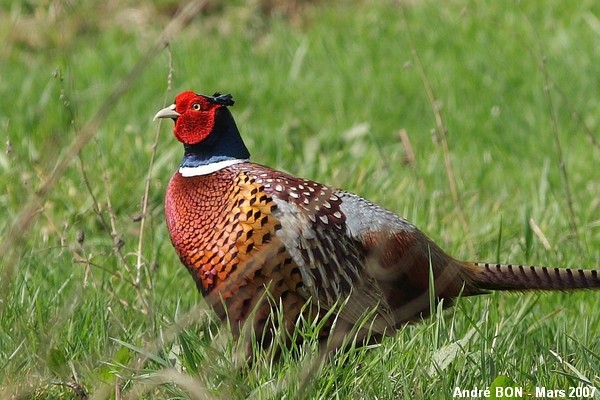
|
The Pheasant Cock's bright colours do not ease its camouflage in nature. |
| [To know more about the Ring-necked Pheasant] [Next picture] [Previous picture] [Top] |

|
Worried by our presence, the Pheasant Cock has inflated its feathers to intimidate us. |
| [To know more about the Ring-necked Pheasant] [Next picture] [Previous picture] [Top] |
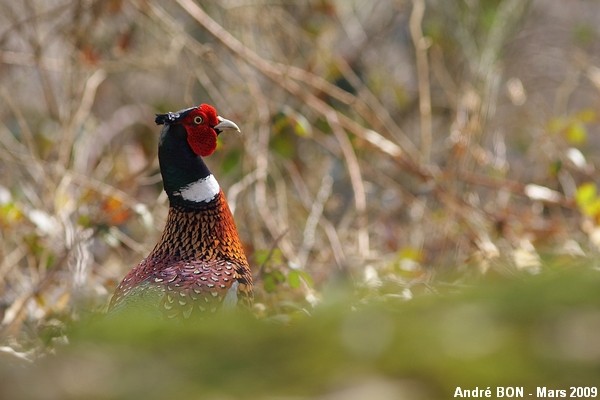
|
Does the size of the red patches of bare skin on both sides of the head vary with the seasons or with the age of the Pheasant? |
| [To know more about the Ring-necked Pheasant] [Next picture] [Previous picture] [Top] |
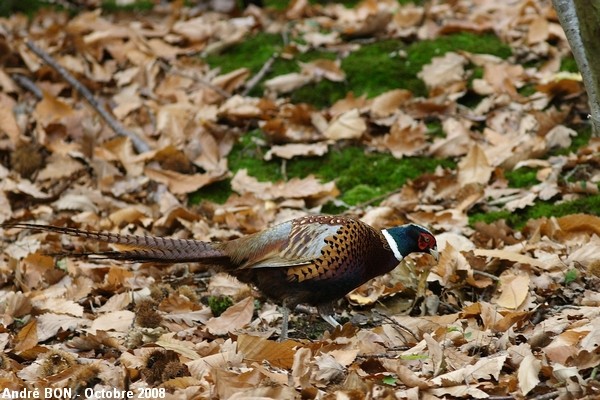
|
The presence of these Ring-necked Pheasants in this forest corner is certainly due to the harvesting of the corn field where they were used to hiding. The fact that there is no hunting over there explains that the approach was easy. |
| [To know more about the Ring-necked Pheasant] [Next picture] [Previous picture] [Top] |
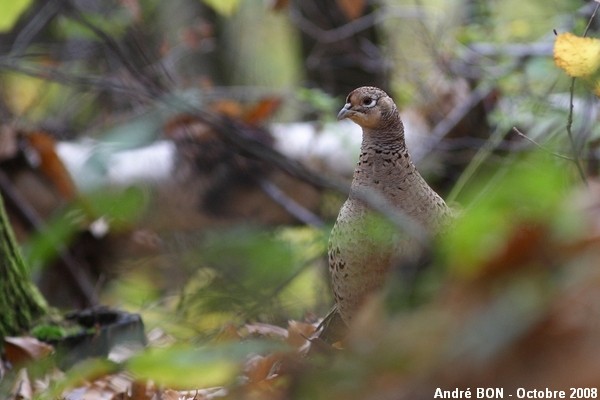
|
Hens have been much more shy than males and I have not been able to take a picture where you can see the whole body. |
| [To know more about the Ring-necked Pheasant] [Next picture] [Previous picture] [Top] |
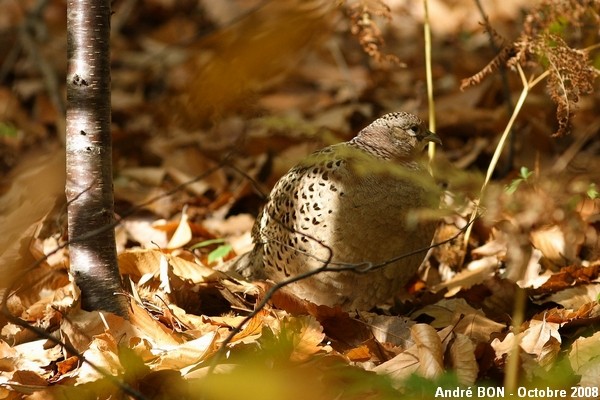
|
The hen's plumage makes an efficient camouflage among the vegetation. |
| [To know more about the Ring-necked Pheasant] [Next picture] [Previous picture] [Top] |

|
I have observed many Ring-necked Pheasants on the Texel Island. Were they introduced here for hunting? I thought that hunting was not allowed on this island. |
| [To know more about the Ring-necked Pheasant] [Next picture] [Previous picture] [Top] |

|
I have used a small wall bordering this lawn to hide while I was approaching. I have been able to shoot pictures from very close. |
| [To know more about the Ring-necked Pheasant] [Next picture] [Previous picture] [Top] |
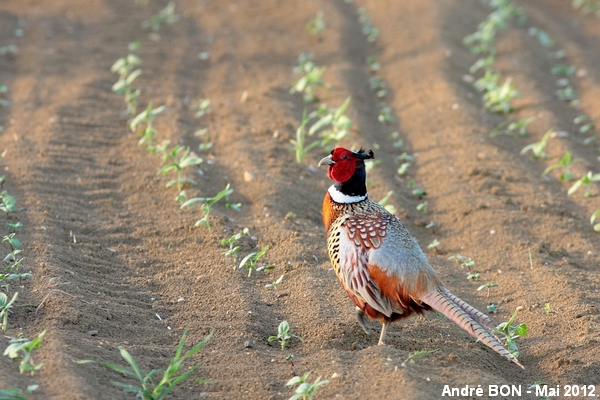
|
Mister Pheasant in a still very young corn field to provide a good camouflage … |
| [To know more about the Ring-necked Pheasant] [Next picture] [Previous picture] [Top] |

|
Madam Pheasant and its shorter tail. |
| [To know more about the Ring-necked Pheasant] [Previous picture] [Top] |
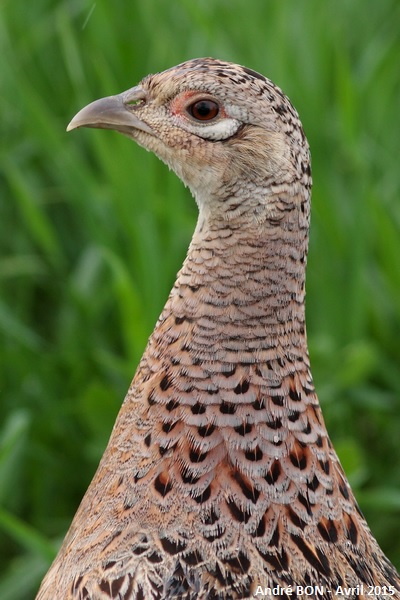
|
Madam Pheasant is not afraid of cars, even when the window is open with a telephoto lens protruding. It will be necessary to be much shier when hunt is on. |